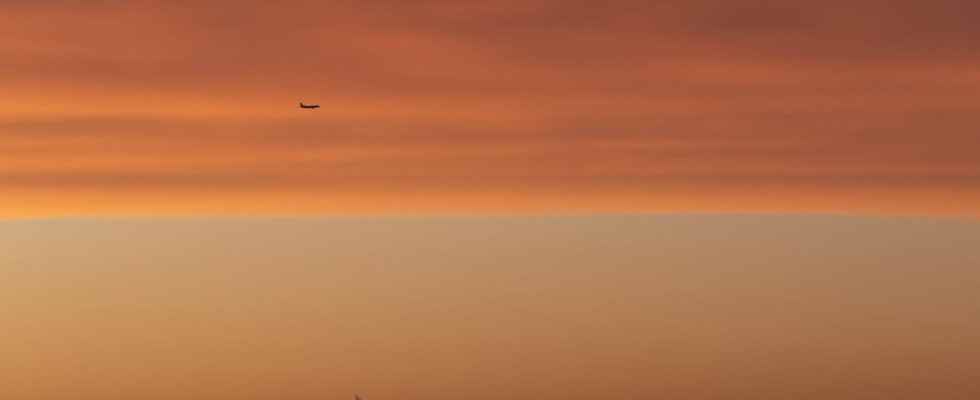SAHARA SAND. A cloud of sand from the Sahara will cross France this Wednesday, February 22, 2023. Which regions are affected?
[Mise à jour le 22 février à 9h10] Attention, yellow sky back in France! Sand from the Sahara is again expected over France from this Wednesday, February 22, 2023, a year after the meteorological phenomenon had already affected the country. Dust from the largest desert in the world will fall in several places in the country and should slightly tint the vehicles – mainly – with a thin film of sand. The cloud arrives from the Iberian Peninsula and will therefore pass through the various French regions.
According to Météo Villes, the whole territory is affected by these probable deposits of sand, linked to the fall of rains. This Wednesday, only the Mediterranean arc should be spared since no precipitation is expected. On the other hand, the phenomenon should therefore be present from the west to the east of the country since Météo France announces, for its part, some rain (almost) everywhere else.
Experts agree that the fallout from nuclear tests carried out in the 1960s left a lasting mark on the Sahara desert, as the Institute for Radiation Protection and Nuclear Safety reminds us. These fallouts come from a hundred atmospheric tests carried out by several great powers: in the final score, the USSR and the United States are neck and neck with 219 shots, then comes the United Kingdom with 23 shots, China with 22 and France with only 4 in the Sahara (but 46 in Polynesia).
The sand indeed contains cesium 137, a radioactive element which has a half-life of 30 years and which can therefore act on these particles. However, radioactivity specialists want to be reassuring since the phenomenon had already occurred in February 2021, without major consequences on air quality. Indeed, if, during this month of February, the activity concentrations of cesium 137 had been higher than the average of the activities measured in February 2019 and 2020 (measurements taken by IRSN as part of its mission to monitor the radioactivity of the air), the concentration of cesium 137 present in the fine particles of Saharan sands was “in February 2021 extremely low in the atmosphere and at ground level” recalls Jean-Christophe Gariel, deputy director general in charge of the health- environment at IRSN (comments reported by the Parisian).
The health impact of these meteorological episodes is therefore considered negligible by IRSN. If health risks exist, they are no worse than those of classic air pollution: in the same way as in March, Météo-France did not communicate an operational color forecast, because this phenomenon will not have normally no real impact on the safety of people.
Why shouldn’t you wash your car?
This phenomenon of depositing dirt on cars leads to a great temptation to wash your vehicle so as not to keep these particles on the bodywork. However, grains of sand can cause scratches, if only by running your finger over them. It is therefore strongly recommended not to clean it with a roller from a car wash, but rather to wait for the time to do its work for the cleaning. For those in a hurry, it is better to rinse it by hand and possibly apply a cleaning product with a sponge.
